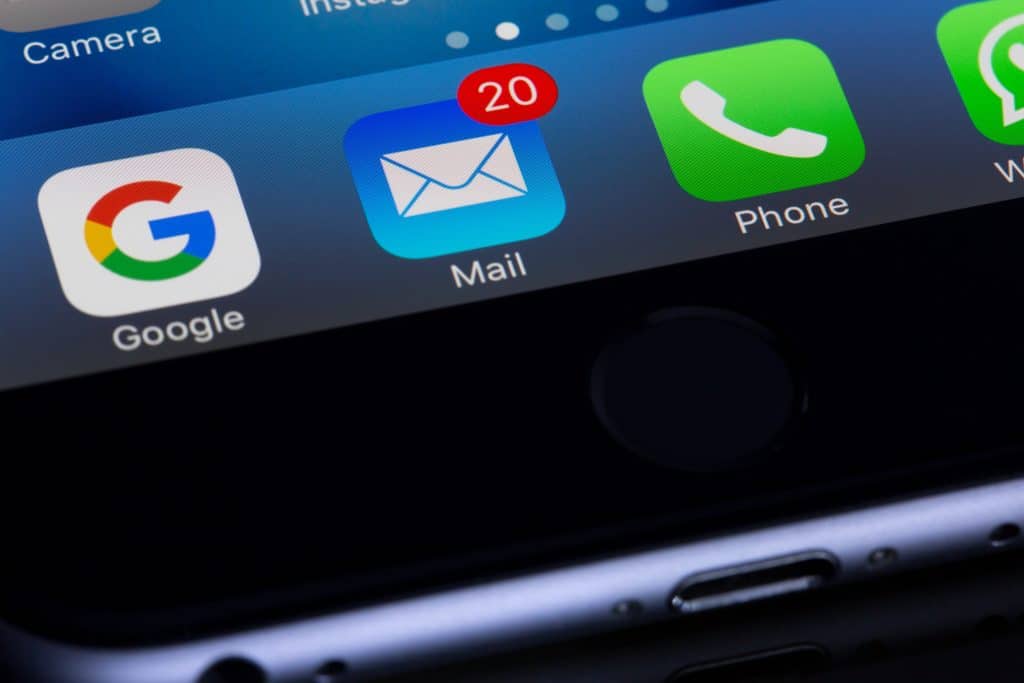
If you’re thinking of two of the most effective and widely used digital channels in the customer acquisition realm, social media along with email marketing will top the list. Rather than arguing between the two, try integrating the them for a better experience.
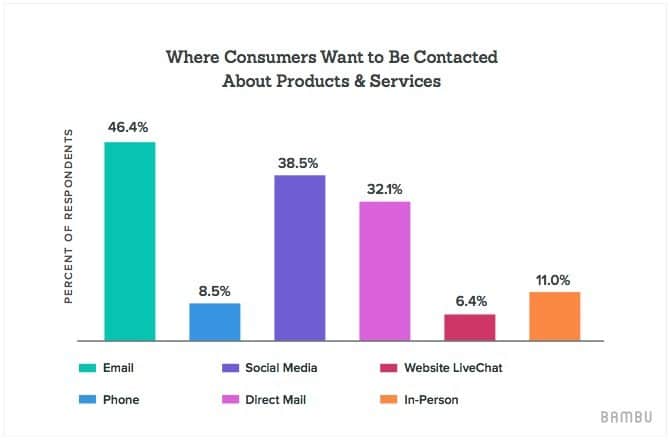
Image source: einsteinmarketer.com
These two channels consist of very different natures but when it comes to forming successful strategies, they can work really well together. Social media is an effective platform in building trust, creating traffic, and expanding reach.
This makes social media fit for building a strong brand image while email can be seen in a more private light, making it efficient for personalizing direct communication and sales.
The Benefits of Social Media & Email Marketing Integration
Here are four reasons why integrating email marketing with social media is beneficial for your brand:
1. Enhances the Marketing Metrics
When the same social media marketing principle is applied to your emails, it allows readers to easily share emails and improves the chances of getting much better opens and click-throughs. This further increases the rate of conversion.
2. Increases Subscribers
If people are posting and talking about your emails on social media, it helps enhance publicity for your brand. Hence, more people get to learn and know about your emails. This provides a better chance of email subscription growth.
3. Recognizes & Distinguishes the Influencers
Using the information received from email service providers, one can determine and pinpoint the consistent email openers as well as conversions. By using this data, you can send exclusive emails specifically targeted at the influencers.
4. Acts As a New Platform for Subscriber Engagement
By using various platforms, it opens up fresh opportunities to reach out and engage with your customers and prospects. Let subscribers know you have an active social media following to keep them updated on product launches, discount offers, and more.
6 Methods to Integrating Email Marketing with Social Media Efforts
Are you willing to extend your email reach and grow your sign-up list at a much quicker pace? Of course, the answer would be yes because everyone wants that. But let’s keep in mind that email continues to convert better compared to social media.
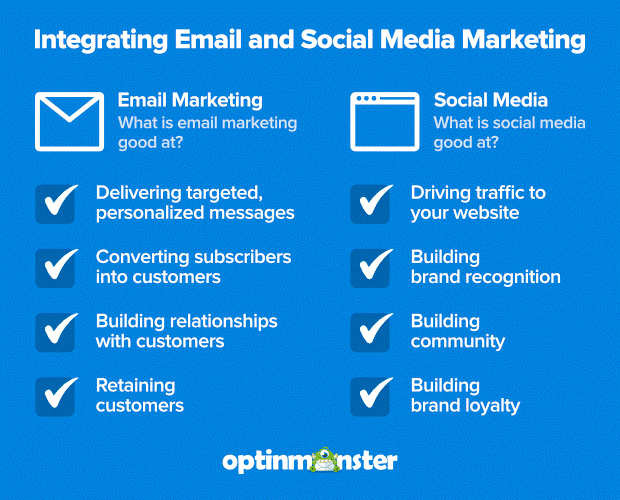
Images source: optinmonster.com
But what becomes of the younger generation that only hang around on social media? You’ll want to engage with them too, so, let’s have a look at the methods on how to integrate this holistic approach of email-social media marketing to help your brand grow.
1. Display Social Profiles in Emails
Once your social media and email marketing teams round up on the same lane, you can begin to discover and adopt new ways for them to support each team. Email marketing is something that can help increase social media engagement by reminding subscribers of your active social community.
The brand Fruit of the Loom is a great example of encouraging subscriber engagement in a playful and interactive way via email.
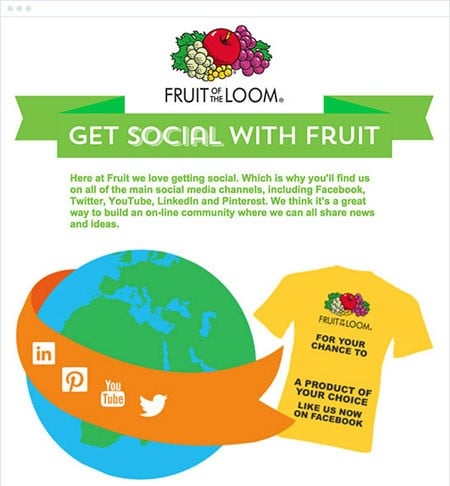
Image source: emailaudience.com
The brand further explains the contribution of social media and the kind of benefit you’ll receive from two of their main media channels. They also host a contest where subscribers can win a product of their choice when they follow them on Facebook.
This is a great strategy that helps increase social media engagement while providing subscriber value and helps them remain connected with your brand. By promoting one network instead of three or four, it allows subscribers to make their decisions easily.
2. Stay in Sync
Chances are, you may already have a calendar for your email marketing. But does it consistently loop in with your social media team? Or are they using a calendar you may not have access to?
This isn’t some farfetched idea, as teams often end up repeating their work simply because the teams are not looped in with each other. For instance, the social media team may have created a holiday calendar to help with email efforts and vice versa.
Integrated calendars are great to ensure everyone stays on the same lane and is aware of when campaigns start and end. This makes it easier for teams to work and promote initiatives and carry out schedules without conflict.
3. Allow Subscriber Engagement and Following on Social Media
Most of the time, many subscribers are not aware of a brand’s social media profile, so ask them to engage and follow your profile to remain in contact. Start by including social media buttons for directing subscribers to your accounts. You can also add some interesting pointers to make it worth joining.
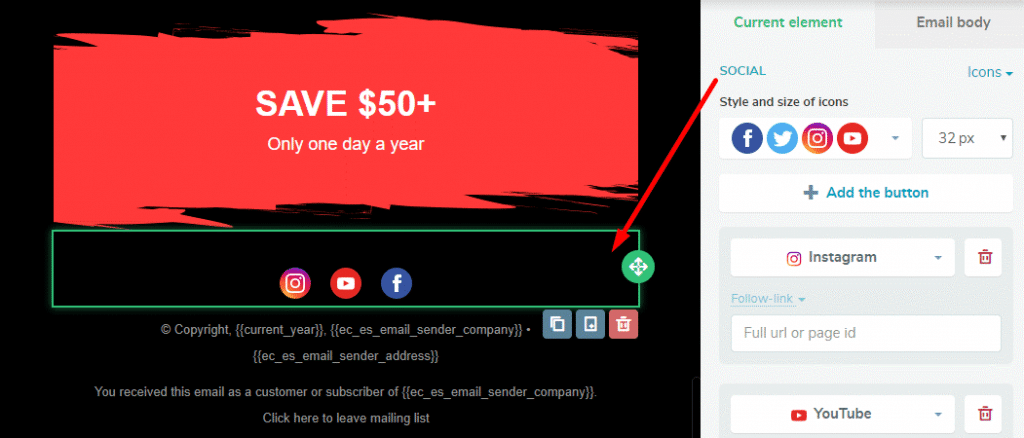
Image source: sendpulse.com
Focus on creating a relationship by making it easier for subscribers to stay in contact with your brand. Prepare a contact list at the base of newsletters that link to your brand’s social media sites and profile. This is how subscribers will forward social media messages or DMs directly from the email they received from you.
It’s important to portray a positive image of your brand, so when your published videos or photos receive great responses on social media, be sure to showcase those comments and likes on your newsletter as well.
Finally, place sharing buttons and allow subscribers to pass your email content. For example, you can place a retweet tag to cross-promote various brand offers on both email and Twitter.
4. Build Exclusive Social Communities for Special Subscribers
This is a great strategy used by Noah Kagan to create a Facebook group with over 5000+ members for his email listing course. This was a free course with materials from experts such as Brian Dean, Andrew Chen, and more that had grown an email list of over 10 million subscribers.
So, the only question left standing is, how does one access these private groups on Facebook? These are groups offered only to privileged subscribers, hence it’ll be an invite-only group. One example is from UniversityParent.com, where Sarah created an invite-only private group, which now has over 800 members and attracts effective engagement.
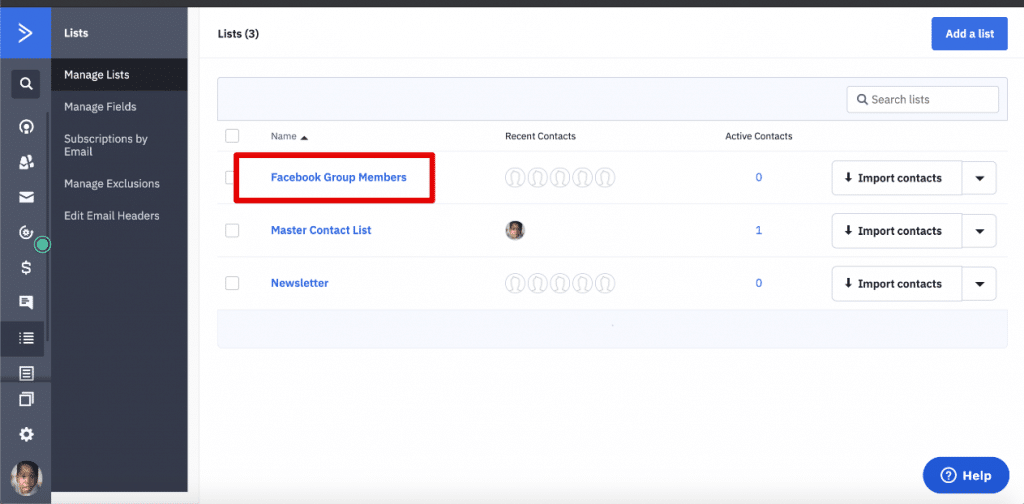
Image source: groupleads.net
Your email subscribers would normally be the most loyal crowd, so the need for them to join special VIP groups like those mentioned above is very high. But, be sure to keep the group moderate and ensure it’s free from spam (yes, this includes self-promotion too, if possible). The key to maintaining engaged and active audiences is creating and putting out useful content.
Apart from Facebook, you can also create LinkedIn groups to invite from your email list. Entrepreneur Lewis Howes states groups as a very powerful LinkedIn feature to help build and grow businesses. Howes himself has a group with over 20,000 members. Now, that’s the kind of exposure you would want!
5. Upload Subscriber List on Social Media Platforms
Uploading subscriber lists on social media networks like LinkedIn, Facebook, Twitter, and more is perhaps one of the most efficient ways of integrating social media and email marketing strategies.
You can utilize the uploaded subscriber list and follow those subscribers on social media, run media campaigns to subscribers already interested and invested in your brand, or maybe even create a customer listing.
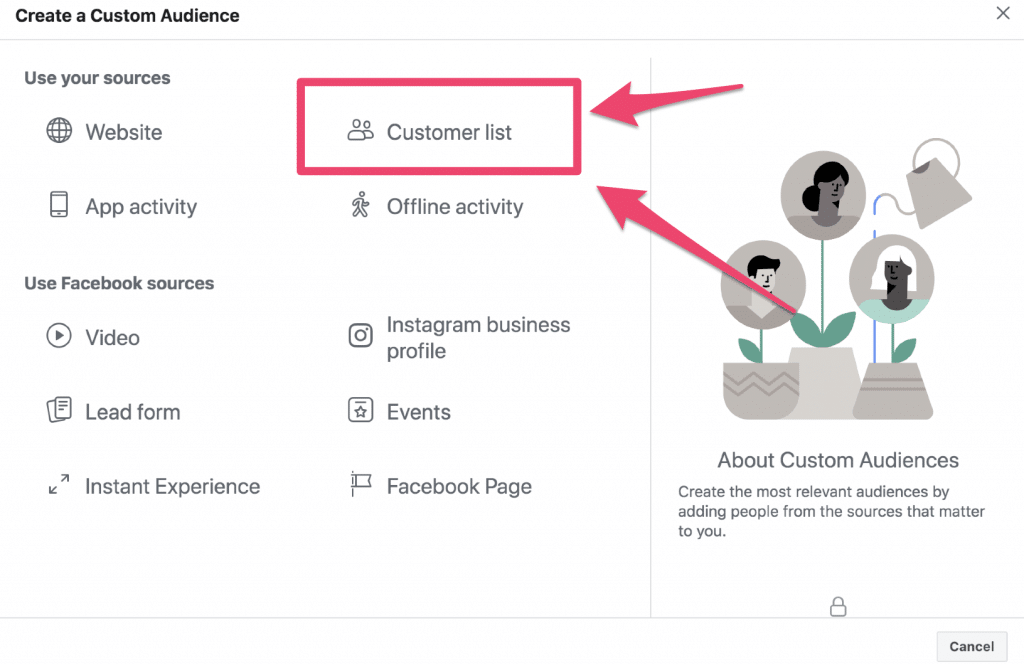
Image source: einsteinmarketer.com
The Custom Audience Feature on Facebook is specifically good for initiating this method, and it can be utilized as a tool for increasing your success through paid reach. Uploading a subscriber list will not only help put an identity over your email subscribers but assist in listening to them.
What are they interested in? What are their conversations about? What are they sharing? Knowing more about what your subscribers are on will definitely help craft better emails and posts.
6. Include Live Social Networking Feeds in Emails
Another effective way of integrating emails and social media is adding into your email a live social media feed. Now, if you’re wondering how this is done, check out Zapier, a third-party software tool that allows users to include live Instagram or Twitter feeds into your emails.
It works because it allows you to find some of the recent tweets from a particular Twitter handle with ease. When the tweets are posted, the feed automatically gets updated.
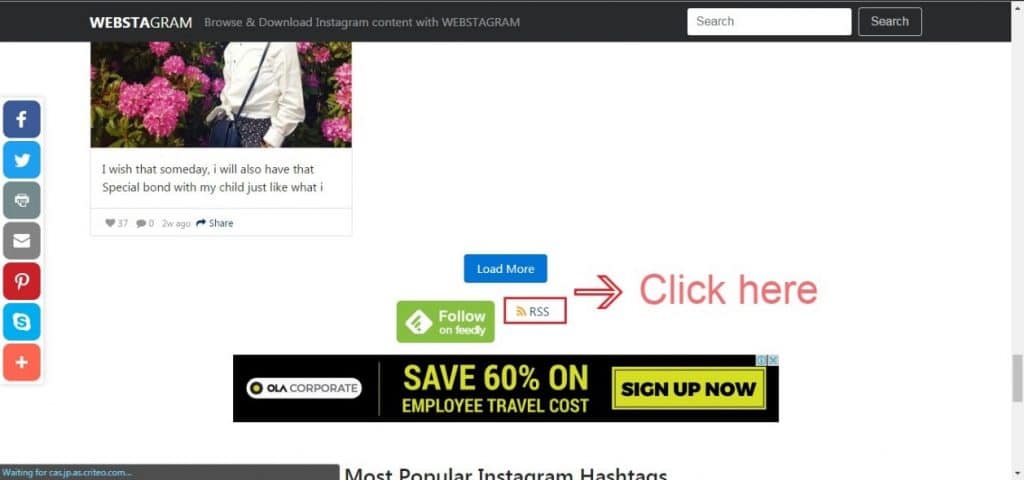
Image source: sendible.com
For instance, if an email is delivered on a Friday afternoon, the live Twitter/Instagram will retrieve the latest tweet/post of that time. In this way, when a subscriber clicks through the email on Sunday, they will see the latest tweet/post of that particular day in their email.
Thus, clicking on that feed will take the subscribers to its respective media accounts, be it Instagram or Twitter. This is a clever and efficient way of gaining much more organic engagement and followers on your social media profile.
Final Thoughts
According to Marketing Charts Survey, many businesses continue to spend a large portion of marketing cash on email and social media marketing. Integrating social media and email marketing does help your customer relationship reach the next level.
Social media is great for crafting an approachable and friendly brand image to enable quick audience interaction while email marketing remains the top profitable channels for different industries. This makes the email-social media hybrid a very effective strategy.
If you start on this, begin by adopting a few methods and build an integrated email/social network campaign that suits your brand identity. It will definitely open doors and increase engagement and sales.
